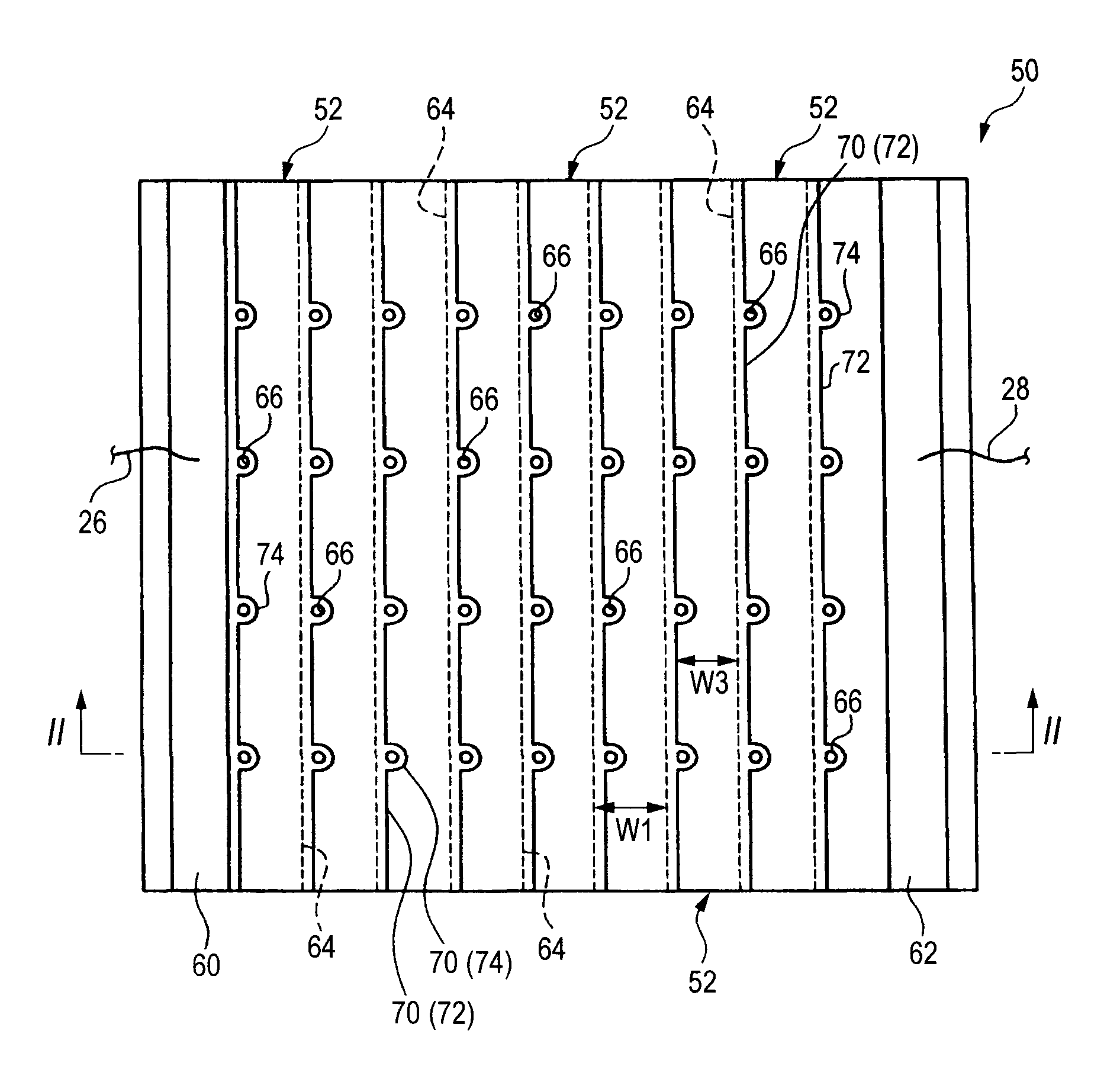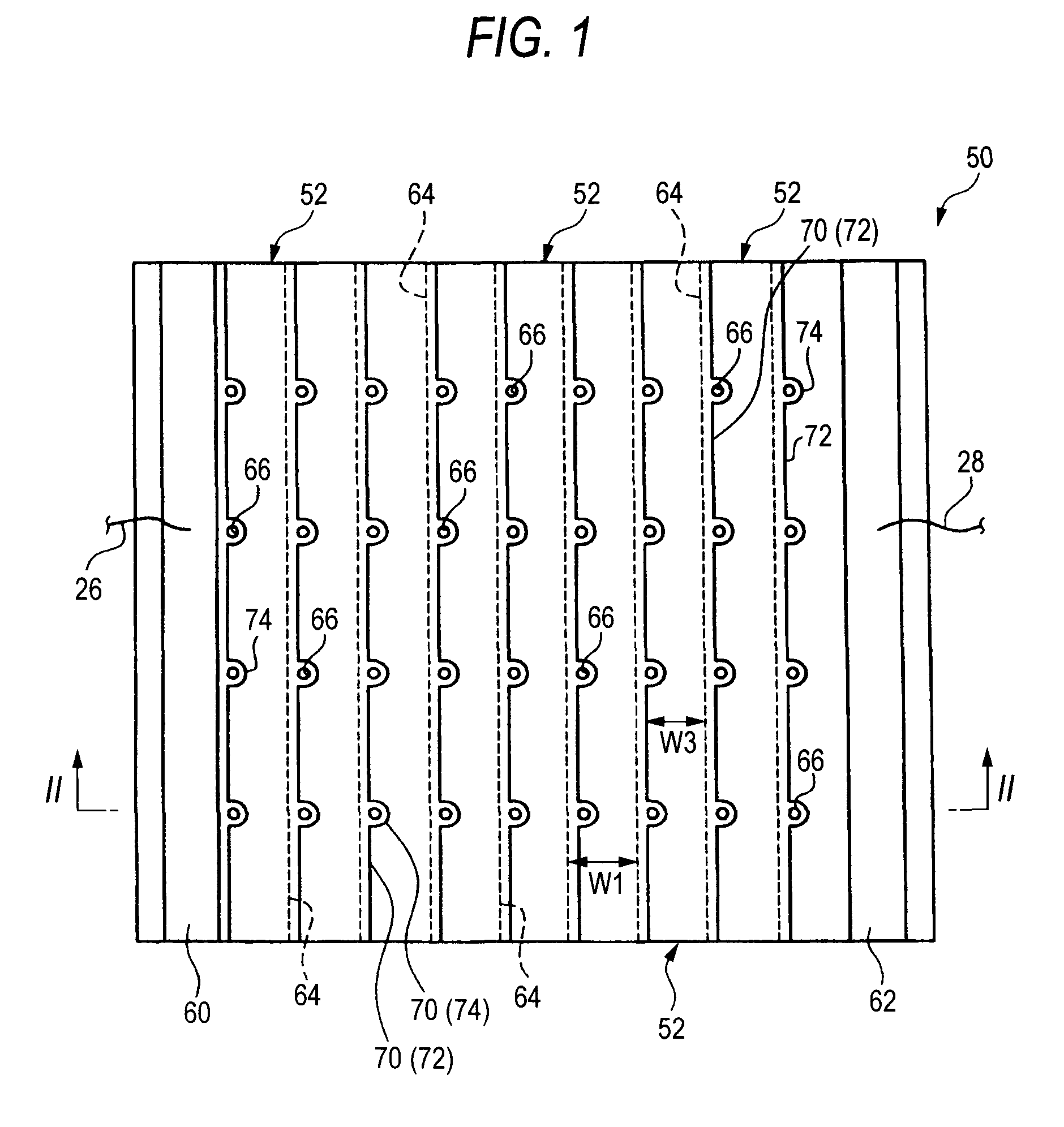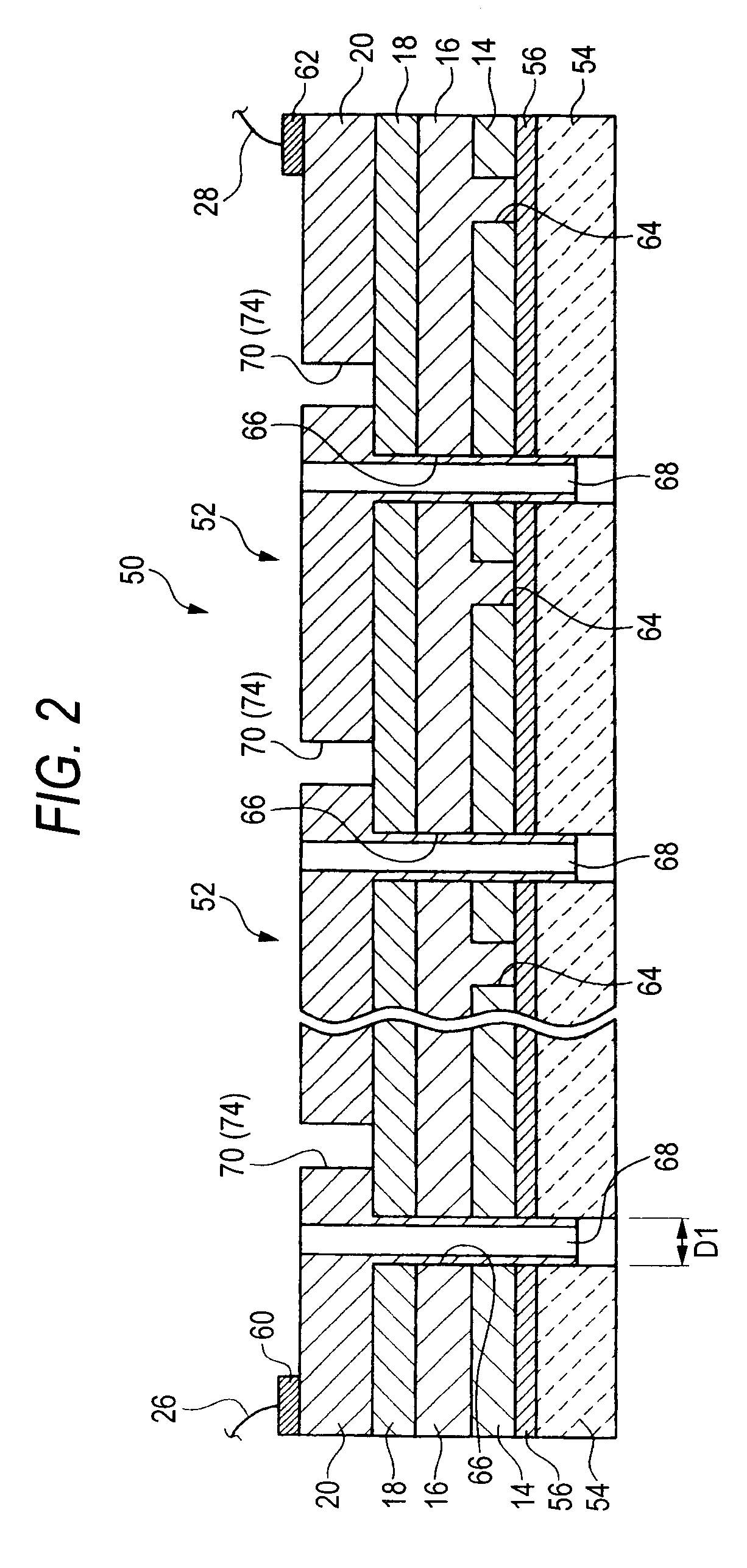Chalcopyrite type solar cell
a solar cell and chalcopyrite technology, applied in the field of chalcopyrite solar cells, can solve the problems of difficult selenization to a composition, high energy efficiency, and inability to set the temperature during selenization of the precursor, and achieve the effects of avoiding linear scratching, high flexibility, and easy formation
- Summary
- Abstract
- Description
- Claims
- Application Information
AI Technical Summary
Benefits of technology
Problems solved by technology
Method used
Image
Examples
Embodiment Construction
[0063]Hereinafter, a preferred embodiment of the chalcopyrite solar cell of the invention will be described in detail with reference to the accompanying drawings. Components which are identical with those shown in FIGS. 7 to 10 are denoted by the same reference numerals, and their detailed description is omitted.
[0064]FIG. 1 is an upper plan view of a chalcopyrite solar cell 50 of the embodiment, and FIG. 2 is a sectional view taken along the line II-II of FIG. 1. The chalcopyrite solar cell 50 is configured by electrically connecting plural unit cells 52 in series to one other.
[0065]Referring to FIG. 2, first, the stacked structure of the unit cells 52 will be described. Each of the unit cells 52 is configured by stacking a binder layer 56 of a nitride, the first electrode layer 14, the P-type light absorbing layer 16 made of a chalcopyrite compound, the buffer layer 18, and a second electrode layer 20 which is transparent and of the n type, on a mica substrate 54 in this sequence....
PUM
 Login to View More
Login to View More Abstract
Description
Claims
Application Information
 Login to View More
Login to View More - R&D
- Intellectual Property
- Life Sciences
- Materials
- Tech Scout
- Unparalleled Data Quality
- Higher Quality Content
- 60% Fewer Hallucinations
Browse by: Latest US Patents, China's latest patents, Technical Efficacy Thesaurus, Application Domain, Technology Topic, Popular Technical Reports.
© 2025 PatSnap. All rights reserved.Legal|Privacy policy|Modern Slavery Act Transparency Statement|Sitemap|About US| Contact US: help@patsnap.com



